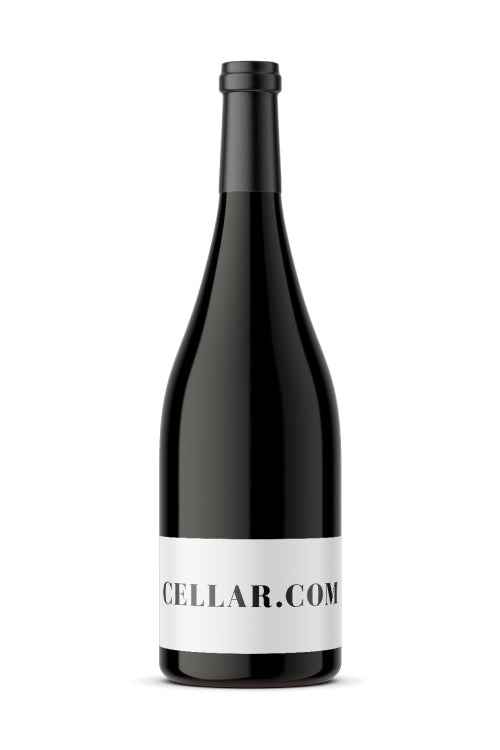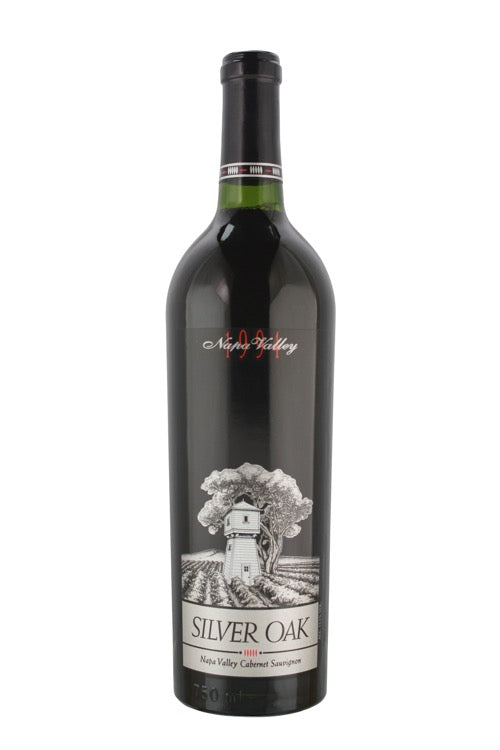1
/
of
2
- Home
- Blue Chip Napa Valley and Sonoma Estates
- Silver Oak Napa Valley Cabernet Sauvignon - 1994 (750ml)
Silver Oak Napa Valley Cabernet Sauvignon - 1994 (750ml)
Silver Oak Napa Valley Cabernet Sauvignon - 1994 (750ml)
Regular price
$189.99
Sale price
$189.99
Regular price
$227.99
Unit price
/
per
The 1994 Cabernet Sauvignon Napa (89% Cabernet Sauvignon and 11% Cabernet Franc) reveals toasty sweet oak in the nose, bombastic levels of black currant fruit and spice along with a hint of mint in the background. Supple and full-bodied, with delirious levels of cedar and unctuously-textured fruit, this fleshy, gorgeously made Cabernet Sauvignon should drink well for 14-15 years.
The Napa offerings from Silver Oak tend to be less herbaceous and more oriented toward Cabernet Sauvignon's black fruit spectrum than the Alexander Valley cuvees. They are every bit as exotic and ostentatious as the Alexander Valley cuvees, but more classic, tannic, perhaps longer-lived, and slightly less approachable.
Silver Oak wines are supple, explosively fruity, and deliver copious quantities of glycerin, extract, and richness wrapped in generous quantities of American oak. Critics have argued that the wine does not age particularly well, but that has largely been proven a myth. I doubt it will last as long as Chateau Montelena, Dunn, or other Napa Cabernets with a 30-40 year aging potential, but these wines have a broad window of drinkability, being delicious at release, and able to sustain their fruit and character for 15 or more years.
Robert Parker - 93 points
Robert Parker - 93 points
Share :


- varietal
- Region
- Sub - Region
- Type
- Reviews
Product Review
The 1994 Cabernet Sauvignon Napa (89% Cabernet Sauvignon and 11% Cabernet Franc) reveals toasty sweet oak in the nose, bombastic levels of black currant fruit and spice along with a hint of mint in the background. Supple and full-bodied, with delirious levels of cedar and unctuously-textured fruit, this fleshy, gorgeously made Cabernet Sauvignon should drink well for 14-15 years.
The Napa offerings from Silver Oak tend to be less herbaceous and more oriented toward Cabernet Sauvignon's black fruit spectrum than the Alexander Valley cuvees. They are every bit as exotic and ostentatious as the Alexander Valley cuvees, but more classic, tannic, perhaps longer-lived, and slightly less approachable.
Silver Oak wines are supple, explosively fruity, and deliver copious quantities of glycerin, extract, and richness wrapped in generous quantities of American oak. Critics have argued that the wine does not age particularly well, but that has largely been proven a myth. I doubt it will last as long as Chateau Mont
Product Score
93
Cabernet Sauvignon is one of the most prominent dark-skinned grape varieties except Merlot in terms of area under vines, but which comprises our largest selection of wines. Grown in just about every wine producing region and climate, Cabernet Sauvignon can express a huge range of aromas, from green peppers in cool climates through to dark jammy fruit in hot regions. Common aromas include blackcurrants, mint, graphite, and forest floor, to name a few. Maturation in small oak barrels can develop a complex range of aromas from cedar wood, cigar box and tobacco to eucalyptus and undergrowth. Cabernet Sauvignon’s success is partly due to its ability to adapt to a range of soils and climates. It is the main constituent of the Bordeaux blend in the revered communes of Pauillac, St. Estephe and St. Julien, and has achieved equal success in California’s Napa Valley. It is grown extensively throughout Southern Australia, with some outstanding examples from the Terra Rossa soil of Coonawarra. Cabernet Sauvignon also plays an increasing role in Tuscany, Italy, where it is blended with native varieties such as Sangiovese to produce the Super Tuscans.
California is one of the most diverse wine producing regions of the world. Although it has a history spanning over 200 years, it has experienced most of its growth in the last fifty years. The regions of Napa Valley and Sonoma County have become as renowned as France’s Bordeaux and Burgundy. While Cabernet Sauvignon, Pinot Noir, and Chardonnay are by far the most popular fine wine varieties, producers in the Golden State have also experimented with an unparalleled array of diverse varieties, including Zinfandel, Syrah, Nebbiolo, Sangiovese, and Tempranillo.
The country’s most famous wine producing region, Napa Valley stretches from the North bay of San Francisco Bay in the South, all the way up to Mount Saint Helena in the North. Although the climate is suitable for a wide range of varieties, Cabernet Sauvignon is dominant and practically synonymous with the region. To account for its geographical diversity, the valley is split up into a number of AVAs. From north to south, the valley consists of Calistoga, St. Helena, Rutherford, Oakville, Yountville, and Oak Knoll. Higher elevation sites include Howell Mountain on the east and Mount Veeder on the west. On its own, Stags Leap District is tucked into the very south east corner of the valley.
Red wine is wine made from dark-coloured grape varieties. The color of red differs based on the grapes variety or varieties used.Interestingly, black grapes yield a juice that is greenish-white. The actual red color comes from anthocyan pigments (also called anthocyanins) from the skin of the grape (exceptions are the relatively uncommon teinturier varieties, which produce a red colored juice). Most of the production centers around the extraction of color and flavor from the grape skin.



